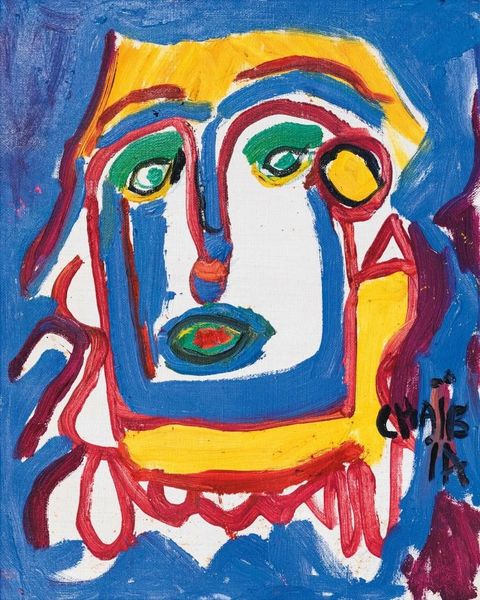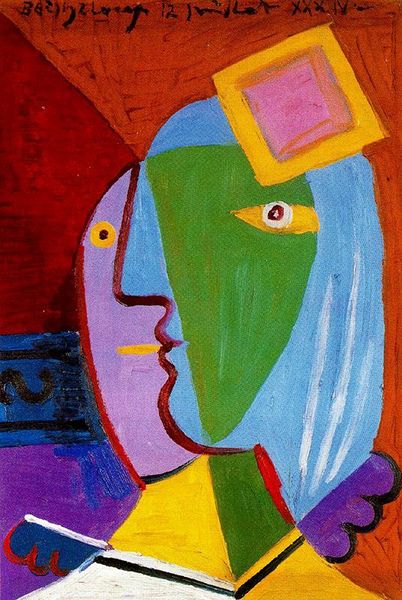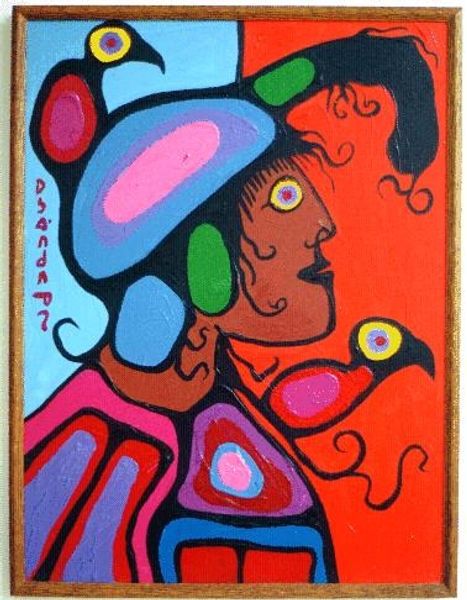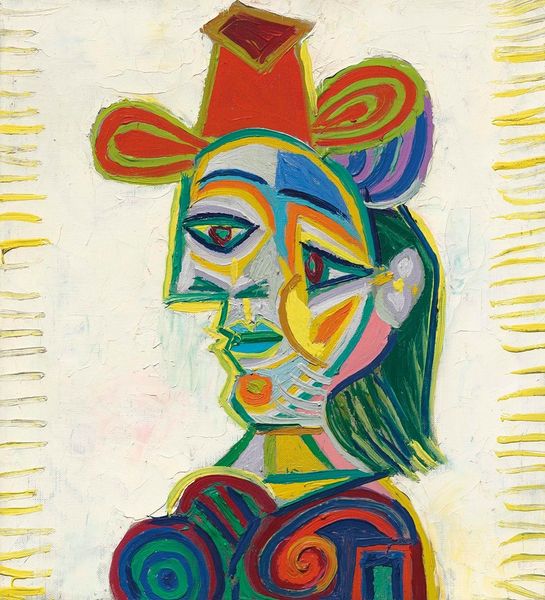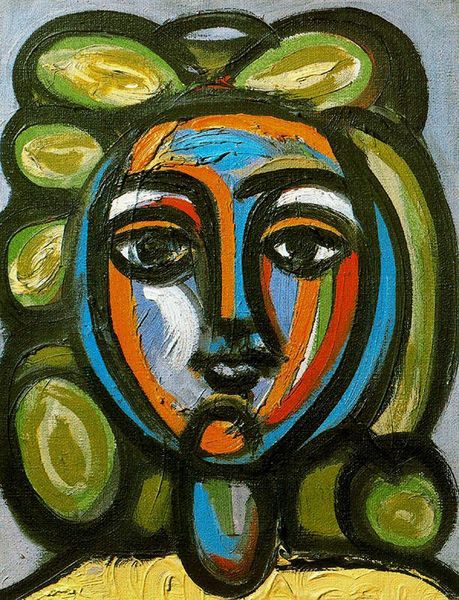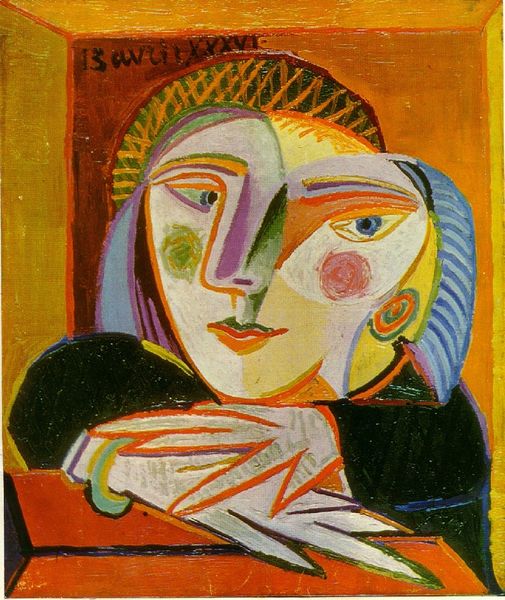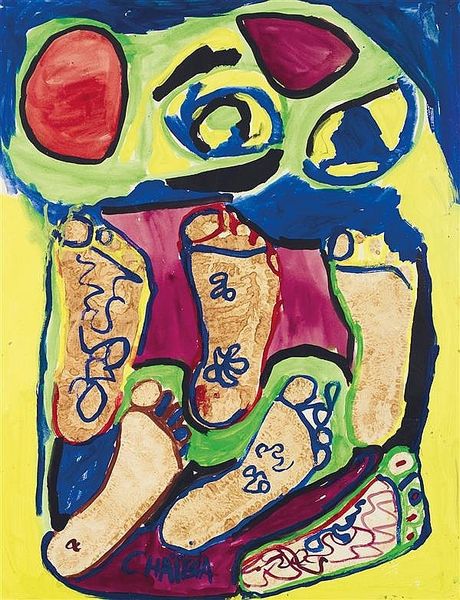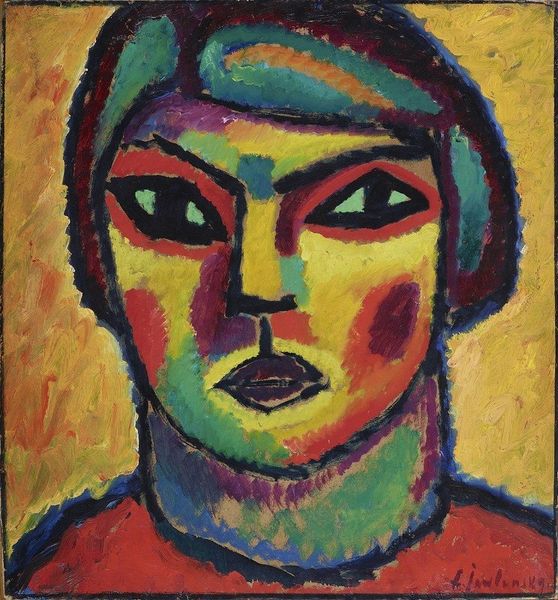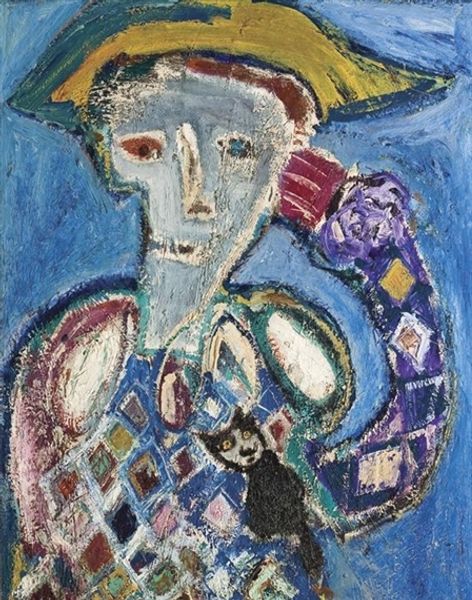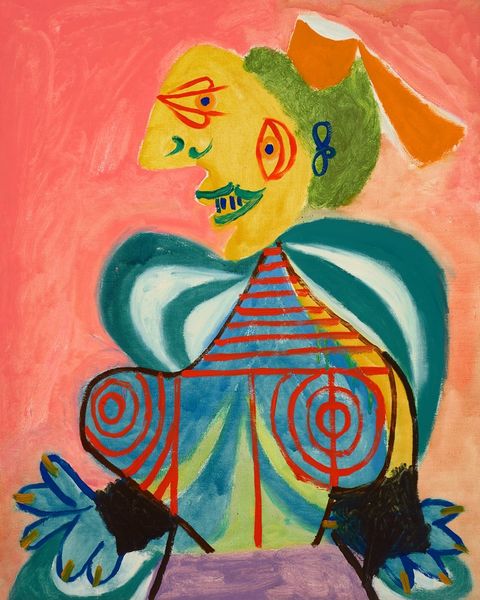
mixed-media, painting, acrylic-paint
#
portrait
#
abstract expressionism
#
mixed-media
#
popart
#
abstract painting
#
painting
#
graffiti art
#
pop art
#
outsider-art
#
acrylic-paint
#
portrait art
Copyright: Chaibia Talal,Fair Use
Curator: Here we have Chaibia Talal's "Mouna," created in 1988 with mixed media on canvas. It strikes me with an immediate sense of vibrancy. What's your first impression? Editor: Visually striking. The bold color choices and almost crude outlines suggest a certain primal energy, a childlike freedom. It almost screams pop art, or graffiti art. Curator: Absolutely, and to dig a little deeper into Talal's background, she was a self-taught Moroccan artist whose work offers a powerful post-colonial perspective on female identity in a rapidly changing world. Editor: So, those bright, bold colors – are they deliberate? The orange and greens contrasting with those strong blues... it creates a visual tension. Is there a connection to Moroccan aesthetics, the use of color in traditional crafts, perhaps? Curator: There definitely is! Think about the history of women artists in Morocco and the way that visual language becomes intertwined with societal roles and expression. The seemingly simple shapes and figures hint at far greater complexities—challenges to Westernized art historical canons and assertions of cultural presence. The face she presents could be seen as androgynous, challenging the concept of binary gendered views within Islamic cultures. Editor: You're suggesting that the flatness and abstraction become tools? Like the 'outsider-art' category that this piece can be seen as? Curator: Precisely. We are asked to confront preconceived notions about femininity and cultural heritage, particularly within a North African context, at that time largely viewed through an Orientalist lens. She creates new possibilities in contemporary culture. Editor: I see it now. It isn't just color; it's a statement, a bold and visual pushback that disrupts established visual culture and traditional subject representation. What might initially look almost naive holds so much intention! Curator: It's a wonderful example of how art can reflect personal experience and political awareness, defying conventions through vibrant colors and intentional simplification. Editor: This makes you realize that a simple visual analysis of shapes and color palettes has definite limits without taking into consideration societal context and history. Curator: Agreed, and in Talal’s “Mouna,” those seemingly simple strokes open dialogues that span artistic boundaries, identity, and cultural assertion.
Comments
No comments
Be the first to comment and join the conversation on the ultimate creative platform.

